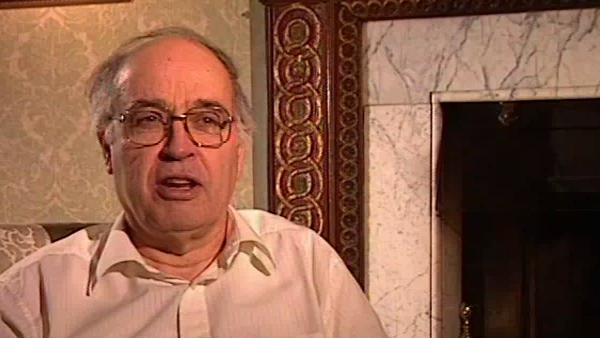NEXT STORY

Background to differential geometry
RELATED STORIES

NEXT STORY

Background to differential geometry
RELATED STORIES


|
Views | Duration | |
|---|---|---|---|
| 11. Early experiences with physics | 2063 | 01:55 | |
| 12. Sent to Trinity College Cambridge | 1524 | 00:57 | |
| 13. Gap year spent in the army | 1200 | 06:04 | |
| 14. First year at Cambridge | 1751 | 03:39 | |
| 15. Geometry or algebra? The Cambridge approach | 2427 | 01:19 | |
| 16. Top in the Tripos | 2172 | 02:24 | |
| 17. My chosen geometry supervisor | 1708 | 01:57 | |
| 18. Background to differential geometry | 2047 | 00:54 | |
| 19. Starting to understand harmonic integrals | 1680 | 01:32 | |
| 20. Vector bundles | 1752 | 03:23 |


Once you'd picked on your field, assuming you knew what you wanted to do, then there'd be a certain limited choice of people who would take research students in that field. So when I was clear I wanted to do geometry, the choice was between Hodge and Todd.
Todd was the person who'd supervised me several years through and knew me very well and helped me with this paper and so I in some sense felt a sense of obligation to him. On the other hand Hodge had the bigger international reputation, and he did… he had this broader aspect of differential geometry and so although I didn't know him that well, by the time I came to make the decision it was clear I should opt for Hodge. I felt a little bit, you know, unhappy about deserting Todd; he'd looked after me and I was one of his star pupils and so on. He was probably expecting me to work with him because… you know, natural… but I decided that Hodge was what I needed. So you chose your own supervisor, you know, within the limits of what was available and subject to their being prepared to take you on and so on. But I… as I say, I'd talked with Hodge before, got him to give us this course on algebraic functions, so I think he knew who I was and he agreed to take me on, yes.
He didn't take on many students at all. I think I was… he hadn't had many students before, only a few, and I think in my year we started off, he actually had four which was very unusual: one of whom was Roger Penrose who'd come from London, another of whom was Michael Hoskin who then moved into the history of mathematics and science and was a lecturer here, and the fourth was somebody called Reynolds who went into school teaching. But that was rather unusual. In previous years he'd had very few. And I think partly the sort of things he did were a bit hard for the students, he didn't attract students so easily, because the sort of thing he taught wasn't part of the normal undergraduate syllabus very much.
Eminent British mathematician Sir Michael Atiyah (1929-2019) broke new ground in geometry and topology with his proof of the Atiyah-Singer Index Theorem in the 1960s. This proof led to new branches of mathematics being developed, including those needed to understand emerging theories like supergravity and string theory.
Title: My chosen geometry supervisor
Listeners: Nigel Hitchin
Professor Nigel Hitchin, FRS, is the Rouse Ball Professor of Mathematics and Fellow of Gonville and Caius College, Cambridge, since 1994, and was appointed to the Savilian Professorship of Geometry in October 1997. He was made a Fellow of the Royal Society in 1991 and from 1994 until 1996 was President of the London Mathematical Society.
His research interests are in differential and algebraic geometry and its relationship with the equations of mathematical physics. He is particularly known for his work on instantons, magnetic monopoles, and integrable systems. In addition to numerous articles in academic journals, he has published "Monopoles, Minimal Surfaces and Algebraic Curves" (Presses de l'Universite de Montreal, 1987) and "The Geometry and Dynamics of Magnetic Monopoles" (Princeton University Press, 1988, with Michael Atiyah).
Tags: John Todd, William Hodge
Duration: 1 minute, 57 seconds
Date story recorded: March 1997
Date story went live: 24 January 2008